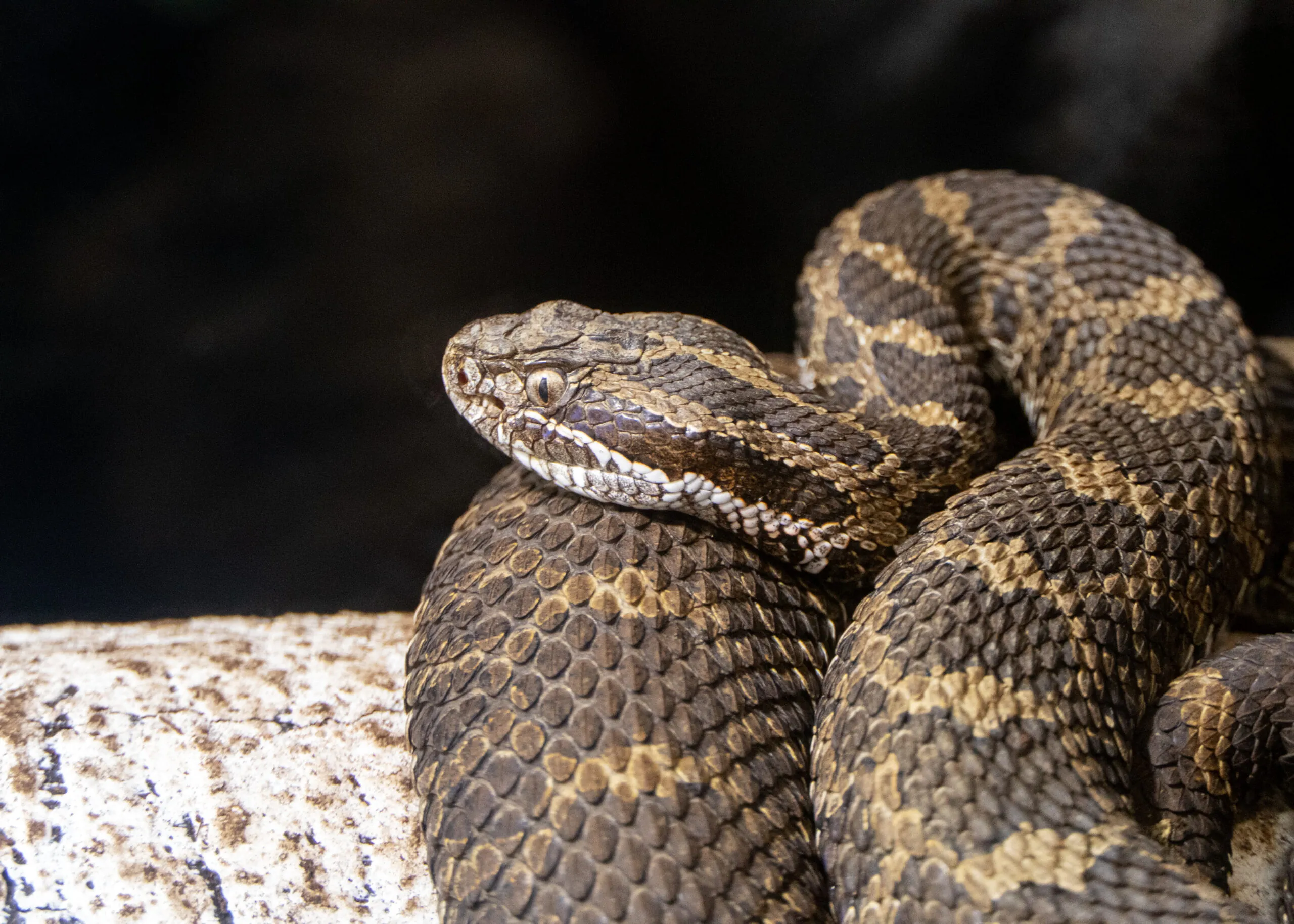-
Menu
- Plan Your Visit
- Meet The Animals
- Check Out Events
- Memberships
- About The Zoo
- Support the Zoo
- Conservation
- Education
- Groups & Private Events
- Zoo News
- Contact
- Zoo Store
- Indianapolis Prize
- Global Center for Species Survival
- Schedule
- Donate
- Membership
- Tickets

- Plan Your Visit
- Meet The Animals
- Check Out Events
- Memberships
- About The Zoo
- Support the Zoo
- Conservation
- Education
- Groups & Private Events
- Zoo News
- Contact
- Zoo Store
- Indianapolis Prize
- Global Center for Species Survival

Vipers
About
Vipers are a large family of snakes that come in different sizes, patterns and lifestyles on most continents around the world except Australia and Antarctica. The largest is the Gaboon viper, checking in at 6 feet long. Vipers have long, hinged fangs that fold back against the roof of their mouth when not in use. They use their fangs to bite their prey—a small animal—and their venom causes the prey to die so it can be eaten. Rattlesnakes are one kind of viper—some of which live in Indiana. Rattlesnakes and some other vipers have heat-sensing pits on their head, which are used to find prey. A rattlesnake’s tail rattle is a warning to animals that threaten it.
Vipers live often solitary lives in trees or on land and give birth to live young, though some lay eggs. Some vipers hibernate in the winter alone or with other individuals in rock crevices or other protected areas. Male vipers may compete for females through physical postures or wrestling.

Conservation
Many snakes are threatened with extinction because they were overhunted by people or from habitat loss. Snakes play important roles in ecosystems by keeping rodent populations under control. Be aware of snakes in your local area and give them their space in the wild. Always do your research before adopting a snake as a pet to be sure you can meet its needs for its whole life.
WHERE ARE THEY AT THE ZOO?

